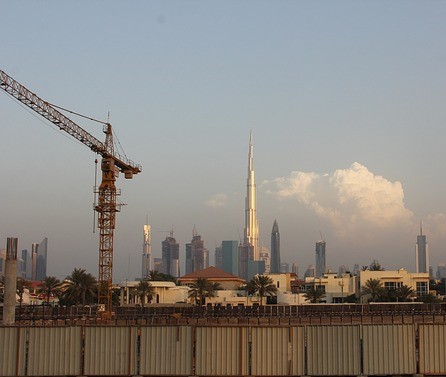Why human capital challenges remain obstacles to Arab development
- Labor productivity data from 1991-2008 show a 0.7% compound annual growth rate for the Arab World while East Asia and the Pacific grew at 3.97%
- The social preference for public sector jobs has precipitated a crisis in which regional governments are unable to create suitable employment opportunities
In the Arab World, a society characterized by skilled, flexible, and innovative individuals nurtured through quality education, employment, and broadly accessible life-long learning opportunities is seen as a vital precursor to knowledge-based economic development (Kingdom of Saudi Arabia Ministry of Economy and Planning, 2010). To varying degrees, Arab countries are faced with similar human capital challenges that serve as obstacles to knowledge-based economic development:
Low Levels of Workforce Productivity
Based on GDP per person employed data from 2008, Qatar, the richest Arab nation, is approximately two-thirds as productive as Organization for Economic Cooperation and Development (OECD) countries, despite the upward trending of oil and gas which forms the majority of Qatar’s domestic product receipts (World Bank, 2010a).
Across the region, labor productivity is low.
Labor productivity data from 1991-2008 show a .7% compound annual growth rate for the Arab World while East Asia and the Pacific grew at 3.97%; Latin America grew at a rate of 1.19%; Sub Saharan Africa grew at 1.46%, and the OECD countries grew at 1.54%.
Preference for Public Sector Employment
Long standing social aspects of career specialization have led to some reluctance to pursue certain professions (United Nations Educational, Scientific, and Cultural Organization, 1960). The social aspects of career choice has slowed economic integration, led to the substitution of expatriate labor in certain industries, and decreased productivity in low value added industries for which low skill expatriate labor is imported from abroad to perform (Ministry of National Economy of the Sultanate of Oman, 2010).
The social preference for public sector jobs has precipitated a crisis in which regional governments are unable to create suitable employment opportunities to absorb the youthful population entering the labor market.
Increasing Female Labor Market Participation
Despite significant gains in educational attainment, female labor market participation is estimated at 22% resulting in high levels of female unemployment (International Labor Organization, 2010). While more women have entered the labor market, many have found employment in part-time work, microenterprises, and the informal economy (Flynn and Oldham, 1999). Rapidly evolving cultural values and changing views on familial obligations continue to be influential in labor market participation and obtaining higher levels of education (Miles, 2002).
Poor Match Between Workforce Skills and Those Demanded by Public and Private Sector Employers
In surveying the public sector, Al-Yahya (2008) finds evidence of a low match between the skills of public sector employees and the work roles they perform particularly at lower administrative levels. Al-Yahya also finds evidence that formal educational qualifications are frequently not related to current jobs and a high number of public sector employees who believe their current jobs require low levels of their perceived skills and capabilities. Citing deficiencies in soft skills like communication, teamwork, analytical skills, and innovative thinking, a recent survey of the private sector also found that 46% of regional CEOs do not believe that education and training systems in the Arab World prepare students for the workplace (Mohammed bin Rashid Al Maktoum Foundation, 2008). These findings are indicative of a vast disconnect between current regional human capital levels and the skills demanded by private sector employers.
Education and Training System Misalignment With the Needs of Knowledge-based Economies
Many Arab countries are unable to meet the needs of all students who want to pursue education because of dramatic increases in student enrollment and insufficient resources (United Nations Development Program, 2002). Though there is a continued long-term trend towards increased budgets for education in the region, meeting the combined demands of increased access, assuring relevance, and improving quality in the face of finite resources is challenging (United Nations Educational, Scientific, and Cultural Organization, 2010b).
Despite positive gains to promote educational opportunity and increased national spending on education, poor educational quality continues to hamper regional human capital development and the ability of Arab countries to compete in the global economy.
At the higher education level, the region’s education systems are failing to produce the right quality and mix of human capital needed for knowledge-based development.
Barriers to Entrepreneurship
While some gains have been made in facilitating entrepreneurship in the region as evidenced by the increasing number of new business registrations, the procedures, time, costs, and minimum capital required to start a business remain much higher than OECD countries (Klapper, 2010, World Bank, 2010b). Though some Arab countries provide venture funding for entrepreneurial endeavors, startup and early-stage financing from banks, venture capitalists, and angel investors is very limited in the Arab World due to low liquidity conditions on exit markets.
The Arab World has approximately 100 business incubators.
This number is significantly low when compared to 1,600 in the United States to serve rather similar populations (National Business Incubation Association, 2011).
Weak Innovation Systems
R&D spending is significantly lower than in the developed world with very little private sector funding (United Nations Educational, Scientific, and Cultural Organization, 2010a).
Regulatory frameworks do not protect intellectual property leading to low levels of patents and stifling private R&D expenditure.
There is weak government policy making in research and innovation in spite of various studies which have shown that critical components necessary for innovation systems, research, market-oriented R&D, and entrepreneurship need to be concurrently fostered and linked in knowledge-based economies (Cooke, 2001, Pietrobelli, 2009). These components include educational systems, institutions conducting basic, applied, and interdisciplinary research, business incubators, funding institutions, and professional societies. Several of the institutions critical to the innovation system are weak in the Arab World (Mohammed bin Rashid Al Maktoum Foundation, 2009).
Managing Growth Sustainably
Underpinned by high fertility rates and increased life expectancy, the population of the Arab World nearly tripled to 359 million growing at an average annual rate of over 2% from 1970 to 2010 (Mirkin, 2010). This growth has increased the demand for basic services such as health, education, housing, water, and sewerage systems which has outpaced the growth rate of national income and government revenues (Rischard, 2009). The Arab World is experiencing rapid urbanization which has resulted in increased poverty, inadequate solid waste collection and disposal, toxic and hazardous waste problems, poor or non-existent sanitation facilities, and degradation of urban environment and coastal areas (United Nations Economic and Social Commission for Western Asia, 2009). Demographic trends are also having a number of societal implications related to marriage and the family, status of women, and care of older people (Mirkin, 2010).






































